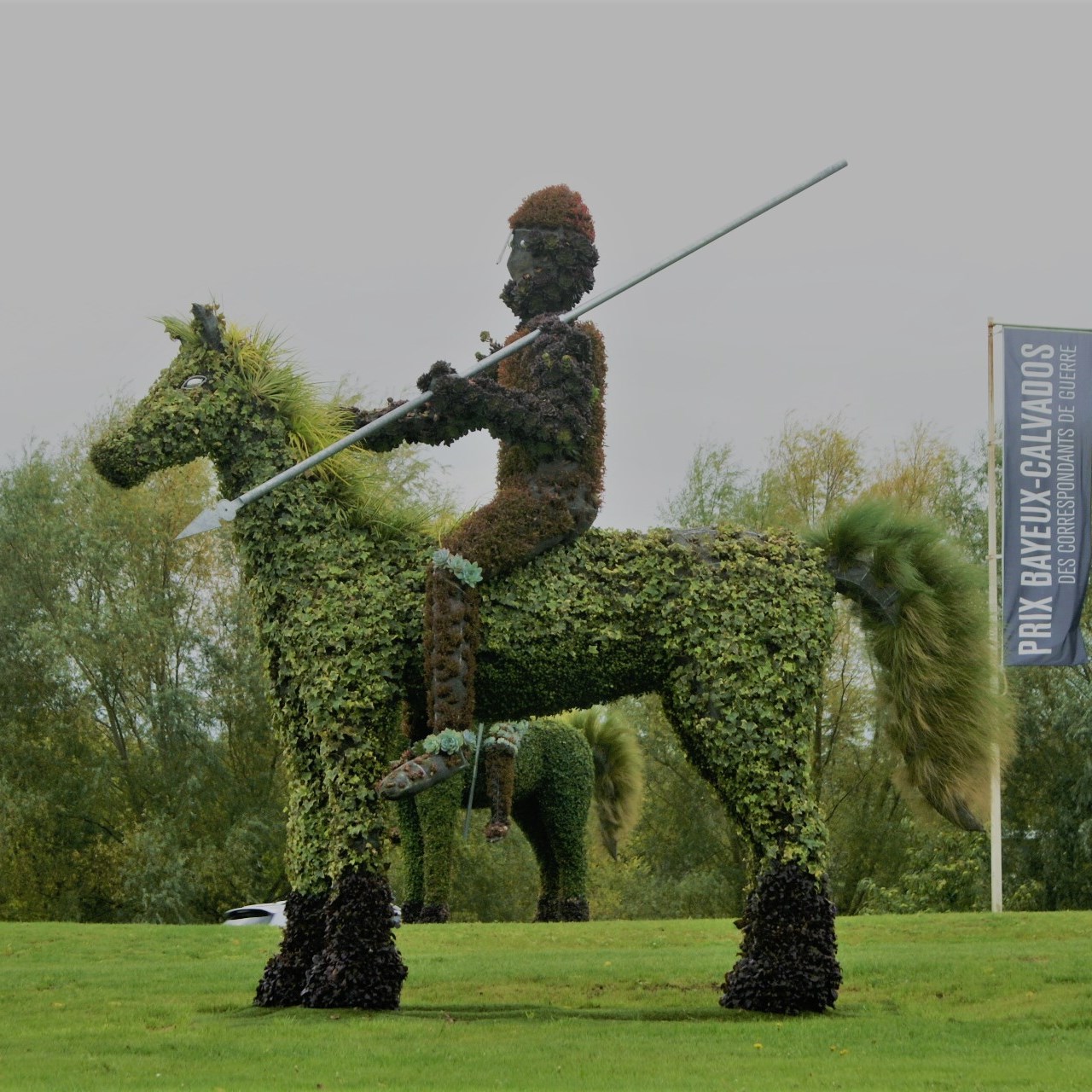A Bayeux War Horse
Did you know the gite has an Instagram page?
No?
You do now so why not pop over and have a look at the photos I have uploaded. There is a mix of images from Normandy and those with a particularly green theme. There is even a very rare photo of me!
And as it is Animal Tales this week I thought I would share one of my animal themed photos and give a little more information on it.
War horses of medieval Normandy
On Sunday we went up to Bayeux and were greeted by several floral knights on one of the roundabouts - how cool is the tail on this medieval warhorse?

The most prized and expensive warhorses are called destriers? They were not a breed but the name given to particularly powerful horses that was bred specifically for use in battle and usually they were stallions. Despite how they are often depicted in films, they were in fact not very large but they had very powerful hind quarters and were well muscled throughout for agility. They were highly trained to be brave even on the most horrendous battle fields. The survival of a knight was not just based on his ability to fight but on the ability of his destrier to carry him throughout. That said, destriers were probably used as much, if not more, in tourneys, the mock battles that were popular in medieval France as well as jousting events throughout the medieval world.
The majority of horses that went into battle were less expensive types. Coursers were lighter and faster and the most common war horse, ridden by poorer knights and men at arms. These were also used for hunting. Rounceys were more ordinary horses, bred for speed and endurance and used as pack horses and for riding. These were also trained for battle and used where their speed was important.
A well off knight would supply the horses for his fighting retinue. He would also own one or more of his own palfreys or riding horses which were not used in battle and his baggage would be carried by pack horses.
I have no idea who this medieval knight and his horse might have been but I suspect they are based on the horses depicted in the Bayeux Tapestry. The names of these brave horses have been lost in the mists if time - many were killed in battle and even in the tourneys/jousts so a knight will no doubt have owned many through his life. Today they live on in some of the powerful breeds of more modern horse - Percherons are likely to be descended from destriers and some even believe the Shire-horse can trace its ancestry back to these brave war horses. For my part I am only glad that this floral horse never has to endure the horrors of medieval battle but can stand proud and safe, greeting those who visit the beautiful Normandy town of Bayeux.

